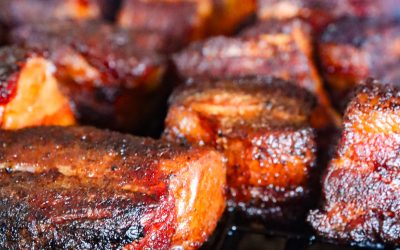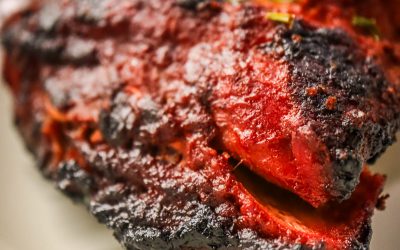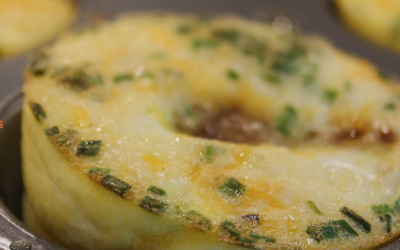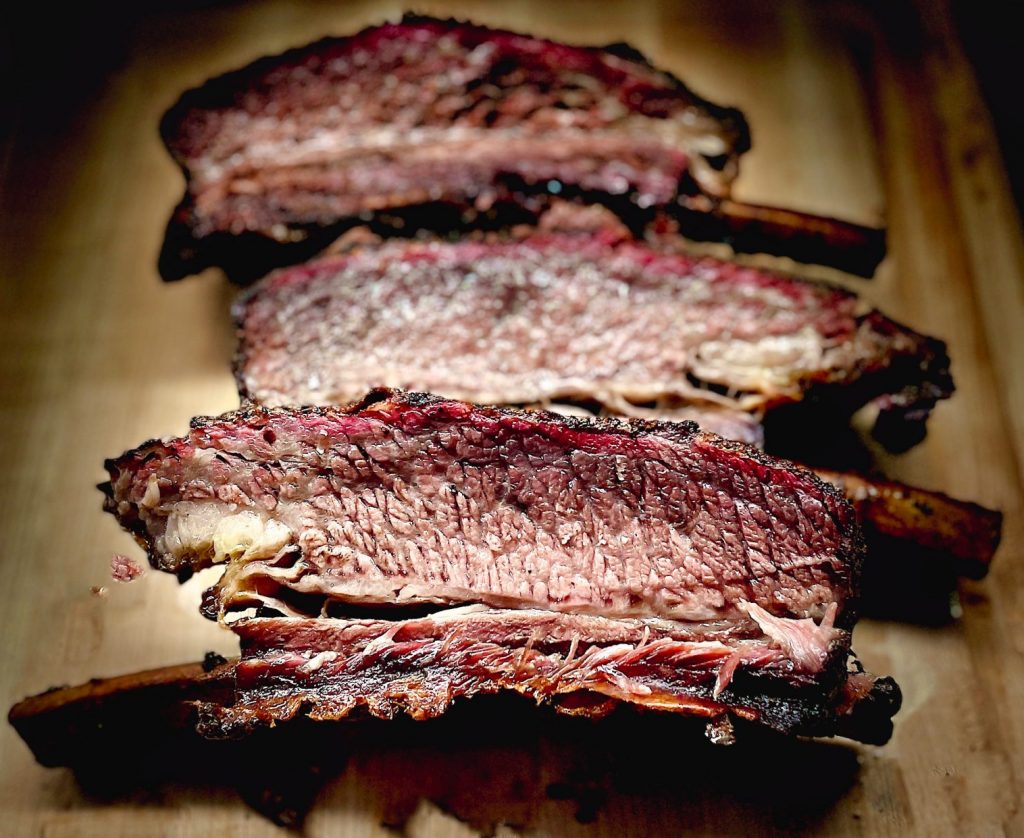
Smoked Beef Ribs
These smoked beef short plate ribs, also known as beef plate ribs or “dino ribs“, are mouth watering good. With a crunchy salty bark, impossibly tender meat, and succulent smoky taste, these ribs offer the best BBQ flavor explosion!
Why Smoked Beef Ribs?
BBQ meat is smoked low and slow to break down the connective tissue and render out the fat. We do this, because most of what is perceived as moisture in meat, is actually rendered fat.
Because of this, barbecue meat is smoked low and slow. This helps bring the temperature up gradually, allowing more time for the fat to break down.
The goal with beef ribs is to be able to build up a nice bark (or crust) on the exterior, while still keeping the interior moist. You want the ribs to stay on the bone, but take very little effort to pull apart.
Which Cut Should You Smoke?
The two main kinds of beef ribs available are beef back ribs and beef short ribs. These cuts include beef back ribs, chuck short ribs, and plate short ribs.
For smoking purposes, you really want beef short plate ribs. Short plate ribs are massive, and contain more meat and fat than any other type of beef rib.
For this recipe, I was able to score a decently priced cut of beef short plate ribs through Wild Fork Foods.
You may have heard beef short plate ribs called “brisket on a stick“. And it makes sense why! Short plate ribs are sandwiched between the brisket cut and the flank steak cut. This means more fat to render (resulting in super tender ribs), and more surface area for that tasty, tasty bark!
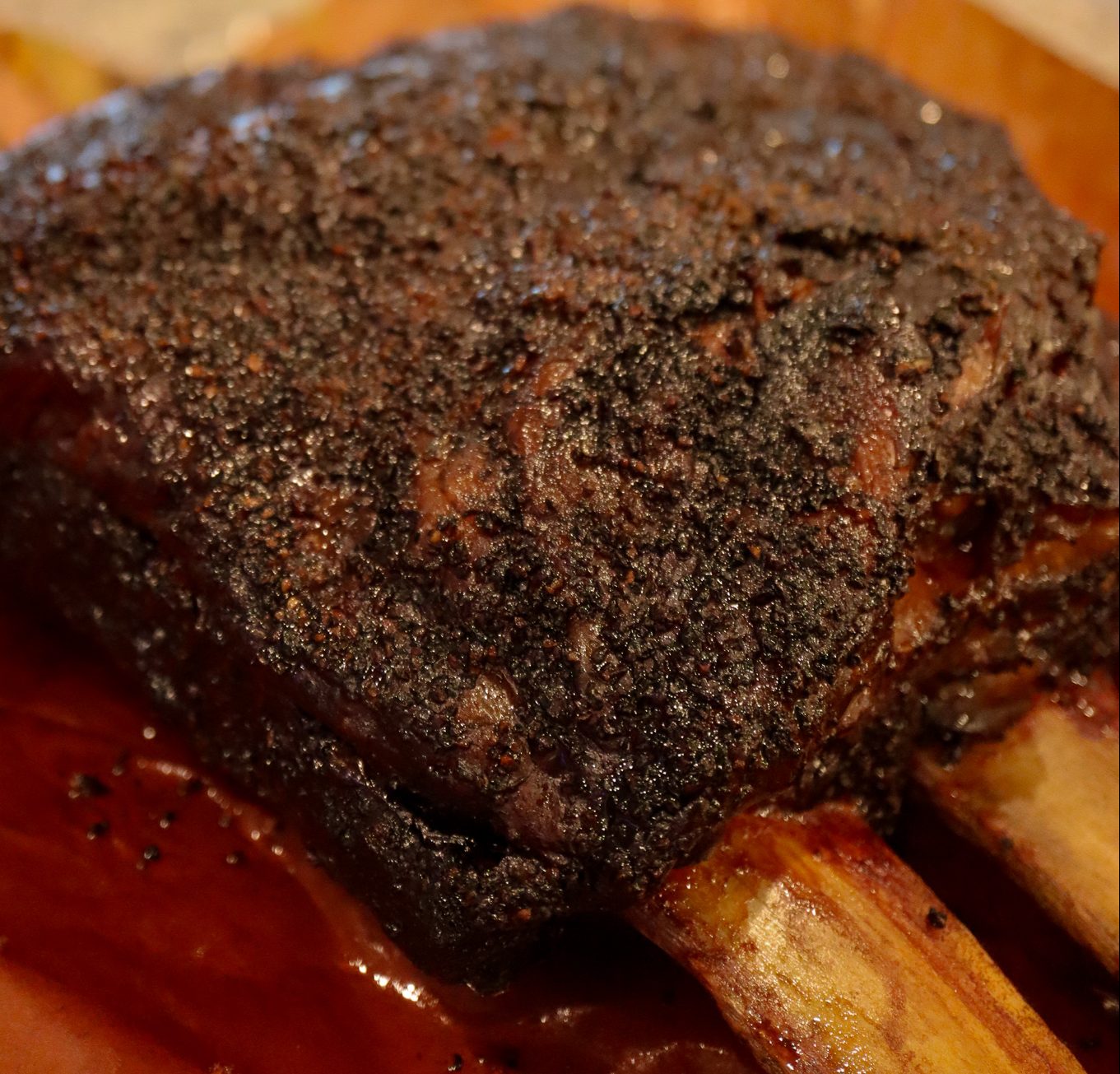
“Bark is what adds such complex, smokey flavors to your BBQ”
What is the Bark?
Bark is the incredibly rich and tasty crust that forms on the surface of low and slow smoked meats. It is what adds such a complex, smokey flavor to your barbecue!
The bark is the main reason we enjoy eating smoked barbecue. Without it, we might as well just throw it in the oven, and save the hassle.
Bark is a result of several chemical reactions taking place during the low and slow cooking process. Spices (mainly salt and pepper), moisture, time, and fat (within and outside) the meat all contribute to the amount of bark that will form.
Moisture is an important factor when smoking barbecue, and greatly influences bark formation. Which is why we spray (or spitz) the meat with an apple cider vinegar solution.
- Smoke sticks to moist surfaces more so than dry surfaces. Moisture also helps to lower the temperature of the meat. Which in turn slows down the cook time, and helps to build more of that tasty bark!
How to Smoke Beef Ribs
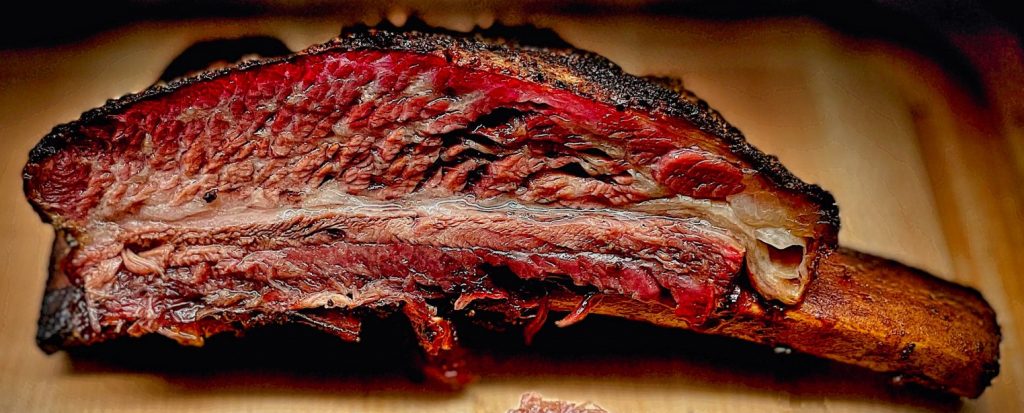
Preparing for the Smoke
Dry Brine When Possible
Dry brining is a technique which uses salt and air to season, and dry the surface area of meat. The salt and air work in unison to remove moisture from the surface of the meat. This allows additional moisture to be retained within the meat.
Unlike a wet brine, dry brining will not add any extra flavor to the meat (except for some saltiness). This is important when making smoked barbecue, where you want to let the taste of the meat to shine through!
- First, generously season the surface of the beef ribs with kosher salt.
- Then, place uncovered beef ribs in fridge for 24-48 hours.
- Finally, remove and season beef ribs with pepper and granulated garlic.
Use Plenty of Pepper
Pepper plays a vital role in building up the perfect bark. Bark forms as the result of chemical reactions between both fat-soluble and water-soluble spices.
In this recipe, both the pepper and granulated garlic act as fat-soluble spices. Unlike salt, they will not penetrate into the meat during the smoking process.
This allows the spices to remain on the surface of the meat. As smoke is introduced over a long period of time, these spices combine with the smoke to produce the highly sought after bark.
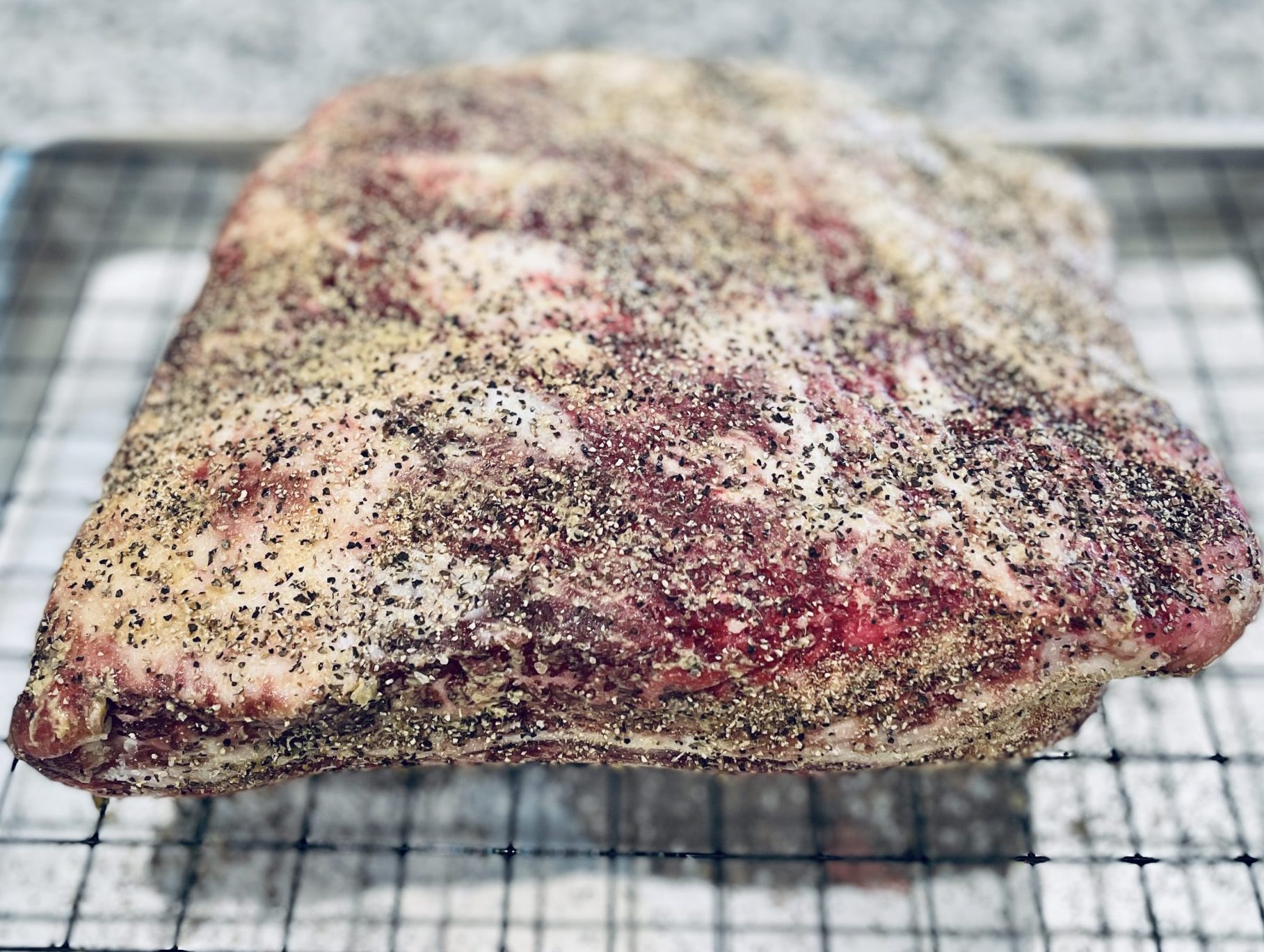
“Pepper plays a vital role in building up the perfect bark”
Use a Smoke Tube
The following advice only applies to pellet grills. While pellet grills are extremely convenient, you do lose some smoke flavor compared to an offset smoker.
To impart more smoke flavor, try using a smoke tube like this one here.
This will help to introduce more smoke throughout the cook. You can even cold smoke with these tubes. How awesome is that?!
Smoking Beef Ribs
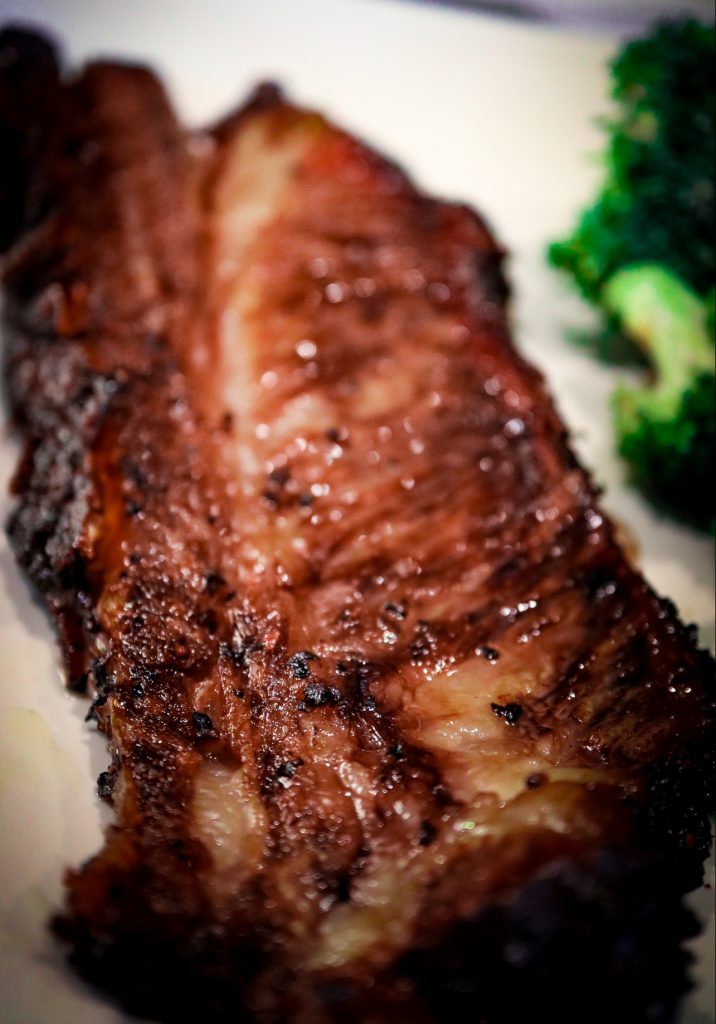
- Start by dry brining the ribs by evenly coating the surface with kosher salt.
- Then, place the ribs uncovered in the fridge for 24 to 48 hours.
- Remove the ribs and season liberally with pepper and granulated garlic.
- Next, Set smoker to 250 degrees.
- Fill the smoke tube with pellets and ignite until flaming, for 10 minutes. (optional).
- Blow out flame and transfer smoke tube to the pellet grill.
- Place beef ribs meat side up, with the fattest part towards the heat source.
- Smoke at 250 degrees.
- After 3 to 4 hours start spritzing ribs with 50% apple cider vinegar / water solution.
- Continue spraying every hour.
- Finally, remove beef ribs once internal probe measures 203 degrees.
- Allow to cool for at least 30 minutes before serving.
What to Serve with Smoked Beef Ribs?
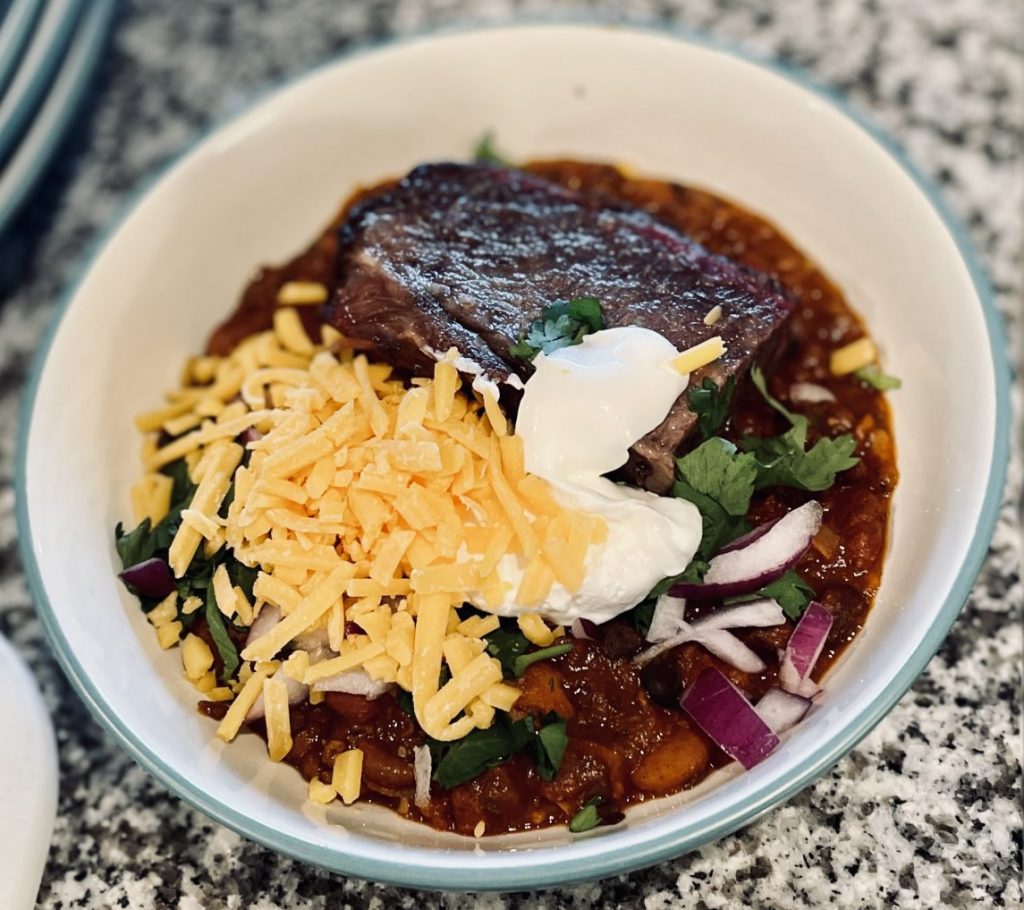
My absolute favorite way to enjoy smoked beef ribs is served in a hot bowl of tailgate chili.
These beef ribs also go great with a fresh batch of homemade potato salad and some smoked baked beans.
Add any leftover rib meat to a homemade breakfast burrito, and set your morning off on the right track!
Smoked Beef Ribs
Equipment
- Pellet grill or equivalent smoker
- Smoke tube
Ingredients
- 1 pack Beef short "plate" ribs
- Kosher salt coarse
- Black pepper coarse (16 mesh)
- Garlic granulated
Instructions
- Dry brine the ribs by evenly coating the surface with kosher salt
- Place the ribs uncovered in the fridge for 24 to 48 hours
- Remove the ribs and season liberally with pepper and granulated garlic
- Set smoker to 250 degrees
- Fill the smoke tube with pellets and ignite until flaming, for 10 minutes (optional)
- Blow out flame and transfer smoke tube to the pellet grill (optional)
- Place beef ribs on grill (meat side up, fattest part towards the heat source.)
- Insert temperature probe, and smoke at 250 degrees
- After 3 to 4 hours start spritzing ribs with 50% apple cider vinegar / water solution
- Continue spritzing every hour, until temperature measures 203 degrees
- Remove beef ribs and rest for at least 30 minutes before serving
Latest Recipes
Pork Belly Burnt Ends
Intro: Why Pork Belly Burnt Ends? Pork belly burnt ends are truly nature’s candy as far as barbecue goes. In the realm of barbecue aficionados, few dishes command as much attention and admiration as pork belly burnt ends. Originating from the traditional burnt ends…
The Maillard Reaction
The Maillard Reaction Who doesn’t like a little char on their food? If you find yourself choosing that chicken breast with the perfect grill marks, or the steak with that mahogany crust, you are experiencing the Maillard Reaction first hand! This “Browning Process”…
Keto Egg Bites
Keto Egg Bites Keto Egg Bites Perhaps the most important quality in breakfast for many is convenience. These Keto egg bites are not only convenient, but are super tasty and nutritious to boot! Packed with flavorful protein, low carbs, and plenty of healthy fats that…

